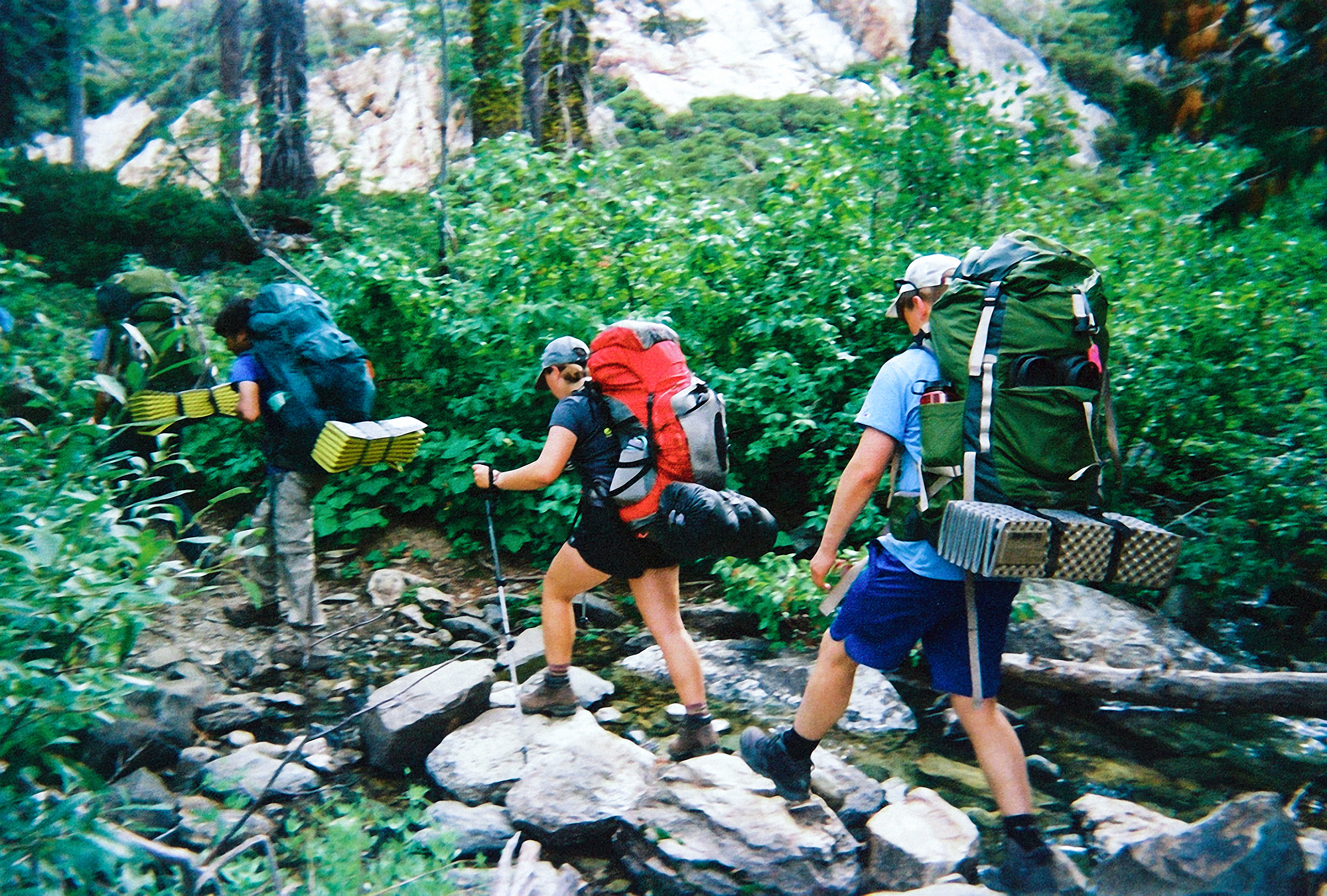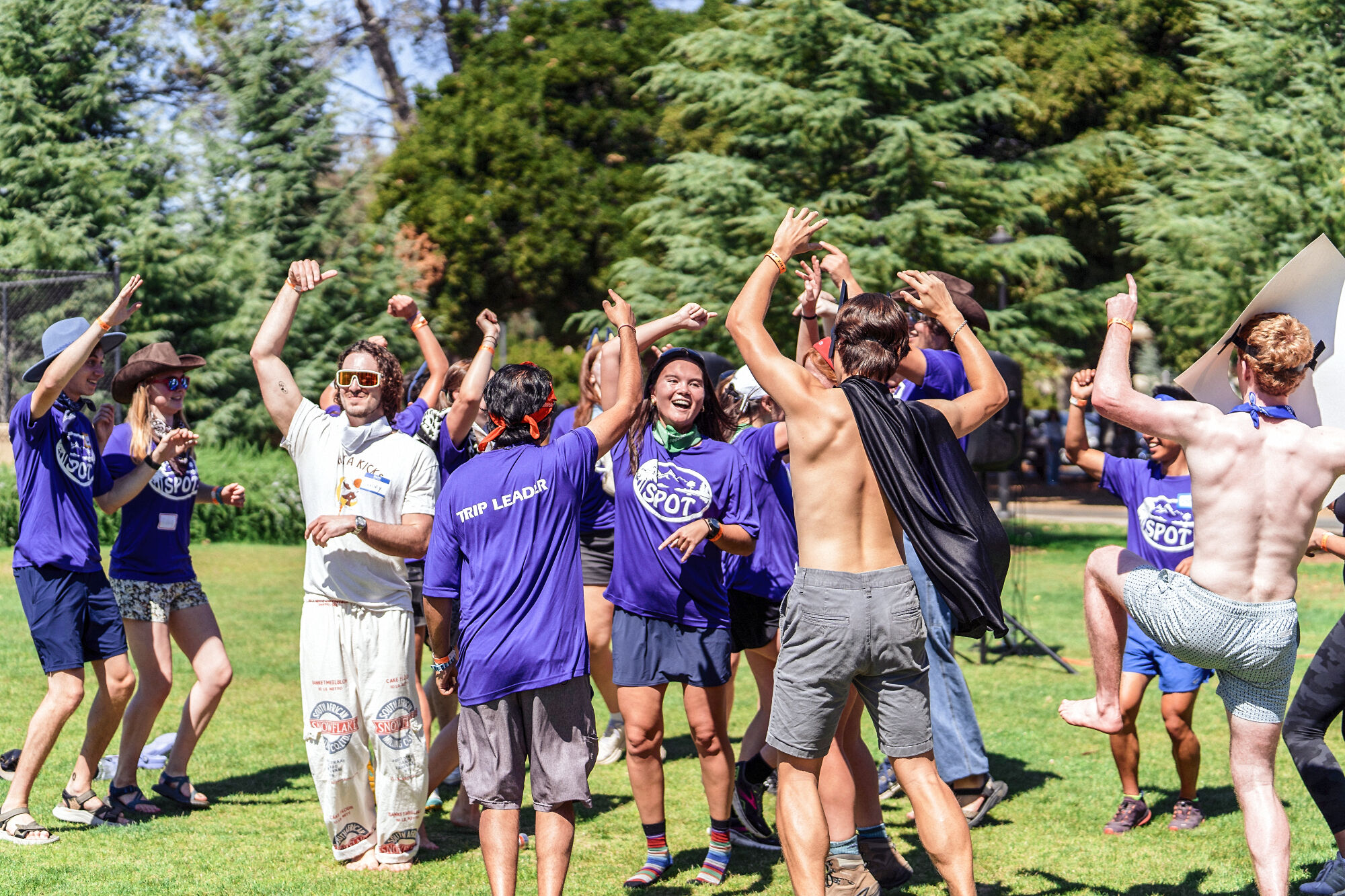The organizers of Stanford Pre-Orientation Trips—aka SPOT—emphasize that their five-day excursions into the great outdoors are suitable for any skill level. But having never so much as seen a sleeping bag, Avey Etaghene feared she was an exception. It was only on the last day of sign-ups that she steeled herself with the thought: What better time to push out of my comfort zone than now?
And so Etaghene, ’27—a transfer student who grew up in Nigeria before moving to Houston in high school—arrived on campus a week before New Student Orientation last September in a state of unreadiness that makes her laugh to remember. She had no hiking boots, no backpack, no headlamp, and no jacket. No matter. SPOT leaders obtained what she needed. After a night sleeping in tents on Roble Field, she and 195 fellow “spotlets,” along with 34 student leaders, fanned out to three locations: Point Reyes National Seashore, Pinnacles National Park, and Etaghene’s destination, Plumas National Forest, high in the Sierras.
So has the SPOT tradition proceeded—with variations in details—every summer save 2020 since two Stanford students named Sarah latched on to the idea more than two decades ago.
 CARRY ON: The backcountry trips teach wilderness skills and also keep participants focused on the world—and the people—around them. (Photo: Courtesy Emily Dickey, ’23, MS ’25, and Noah Bartelt, ’23, MA ’24)
CARRY ON: The backcountry trips teach wilderness skills and also keep participants focused on the world—and the people—around them. (Photo: Courtesy Emily Dickey, ’23, MS ’25, and Noah Bartelt, ’23, MA ’24)
Etaghene headed out as a skeptic—“My God, why do people camp if there’s a chance there’s a bear nearby?” she wondered—and returned as a partial convert. (She says she’s probably more of a glamper.) Far away from air and light pollution, the views and the night sky were unlike anything she’d ever seen. “I was just staring up and just being like, ‘Oh wow! I’ve come so far,’ ” she says. “ ‘Look at me under the stars in the middle of a forest in Northern California.’ ” And she found a surprise satis-faction in PB&J, her refuge from more intimidating camp food, such as grits. “I’m still getting used to the American cuisine.” What she loved most was the camaraderie of cooking on a tiny stove, sharing stories, and spontaneously dancing to no music around a campfire ring with no fire. “It was just a genuine place of meeting new people and connecting,” Etaghene says. “We still have a group chat where we all keep up with each other.”
The point is to bond.
The program was not designed to teach how to pitch tents or to hone advanced backcountry skills, says co-founder Sarah Rubinfeld, MS ’02, PhD ’10, now an associate professor of environmental science at Carthage College, in Kenosha, Wis. It was about making Stanford a more welcoming, comfortable place. The outdoors has a way of bringing strangers together—being around one another day and night, sharing shelter and food, being far from distractions. “The way you get to know people in the woods is different, right?” she says. “Walking into New Student Orientation, walking into your first day of class, knowing there are people who like me even when I’m dirty and smelly—that’s a confidence boost.”
Some credit is due to the Tigers.
The spark for the program was a conver-sation Rubinfeld had with fellow founder Sarah Shulman, ’03, in the fall of 2002, when both were leaders in the Stanford Outdoor Education Program. On a Friday-night drive to the Sierras, they talked about Rubinfeld’s undergrad experience at Princeton, which had begun with a six-day backpacking trip in southern Vermont. Other schools offered similar programs. Why not Stanford? Around the same time, Krista Zizzo, an administrator in charge of New Student Orientation, heard from a relative who raved about a similar trip. She found her way to the Sarahs to discuss it.
Transfer students had first dibs.
Thirty participants joined the first SPOT trips in September 2003, in Desolation Wilderness, not coincidentally near Stanford Sierra Camp, where Shulman—now a rabbi in Denver—had worked as a hiking leader. “We needed a way to plan routes that didn’t require us to go out and spend days hiking,” Rubinfeld says. “Sarah knew Desolation well enough that we could basically use her brain as our scouting.” To keep headcounts manageable, enrollment was initially limited to transfer students. In 2004, SPOT expanded to frosh from the Northeast under the theory that those from farther away would need more help adjusting. The Stanford Daily was not impressed, titling an editorial “Pre-Orientation Trips Not Inclusive.” By 2008, SPOT was open to all entering undergrads.
Screen time is out.
Participants break into groups of a dozen, with two student leaders certified as wilderness first responders who have taken a quarter-long course on outdoor leadership. They don’t force participants to give up their phones and watches, but they highly recommend it. Questions about the hour are hence likely to be answered with “SPOT o’clock.”
Sharing your story is in.
The emotional heart of the program lies in its “spotlights,” protected times throughout the trip when each member of a group gets to talk about their life’s journey for up to an hour. “I learned a lot of very personal things about people that I wouldn’t learn about other Stanford people for months and months,” says Creagh Factor, ’27, who has been a SPOT participant and a leader. “It
was a really great way for us to realize that we were all in college for the first time and very nervous about what that was going to be. It’s a very special tradition.”
Sam Scott is a senior writer at Stanford. Email him at sscott3@stanford.edu.



